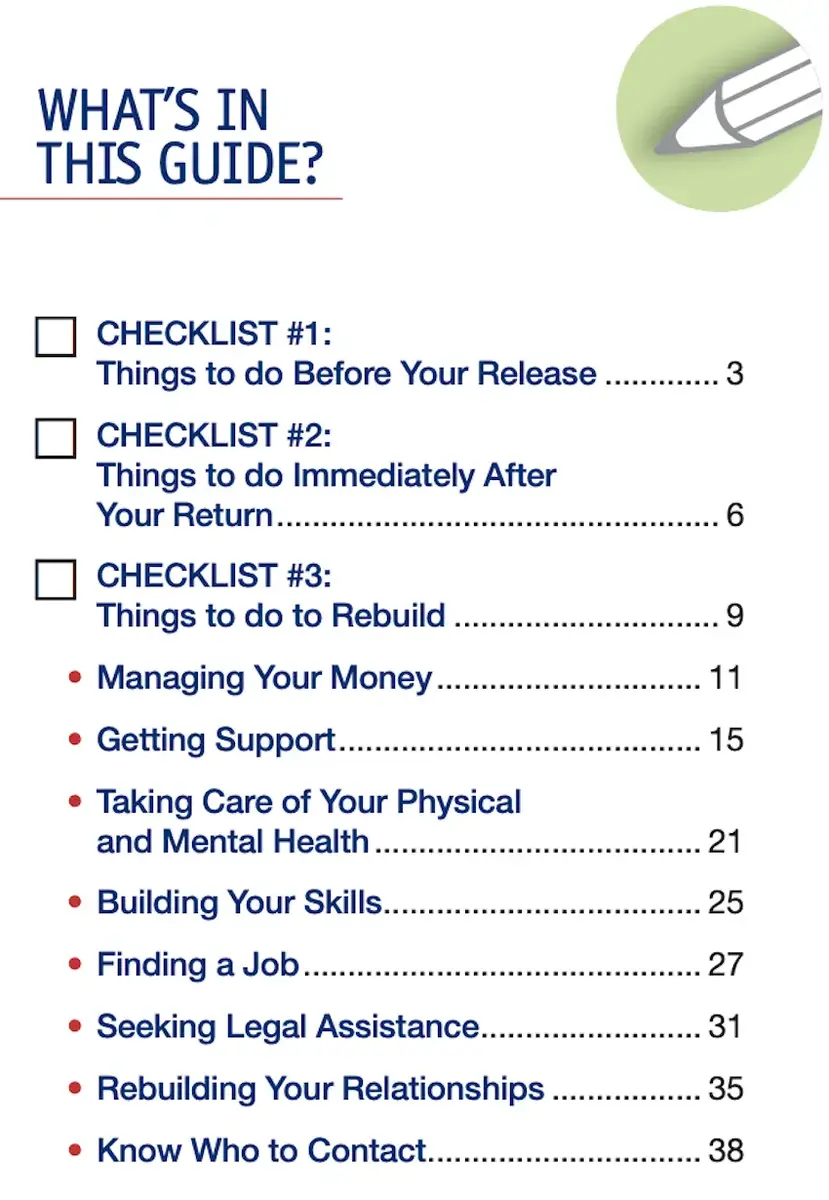Department of Justice collaborations have new relevance in 2020
To combat COVID-19, which spreads easily in crowded indoor settings with poor ventilation, thousands of incarcerated individuals were sent home from US prisons in 2020. To successfully re-enter society, the formerly incarcerated must find a means of financial support and a safe place to live, build social connections, stay healthy, and avoid further encounters with the criminal justice system. These challenges can be daunting in the best of times.
Research indicates that support in finding housing, transportation, and employment is linked to lower rearrest rates following release from prison. This support is often given by employees, but a more efficient way might be to provide formerly incarcerated individuals with concrete steps they can follow on their own–such as how to obtain a driver’s license or health insurance. In 2016, OES contributed to work by the Bureau of Prisons (BOP) to design a re-entry handbook outlining these and other concrete steps to assist individuals with their transition.
The handbook has three checklists of discrete steps to take at three different points in time: immediately before release, within one week of returning home, and within one month of returning home. In many cases, the proper timing and sequencing of steps is important for preventing setbacks. For example, encouraging individuals to obtain a birth certificate and any education records prior to release can accelerate their ability to obtain a government-issued photo ID and apply for work upon release.

OES reviewed each recommendation to ensure it was broken down into discrete steps and connected individuals to relevant resources, such as organizations that help people navigate housing and legal services. OES also recommended that individuals be addressed as “community members” and provided ideas for how to de-stigmatize subjects such as mental health.
In a separate piece of work in 2016, OES developed a Community Action Deck to facilitate conversations about how to improve community-police relations. The Task Force on 21st Century Policing had generated recommendations in 2015, intended to empower individual community members to address issues facing their neighborhoods. Working from those recommendations, the 30 cards in the Community Action Deck outline discussion topics in clear, actionable language. In 2020, many communities are deep in discussions about community-police relations, making these concrete recommendations particularly relevant now.
These two projects are different from the bulk of OES work, where design changes are usually evaluated with a rigorous evaluation to assess their effectiveness. Future work can build on these insights, and future iterations might be able to be tested with methods that can give strong evidence of how effective they are.
